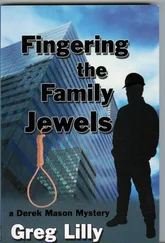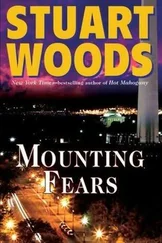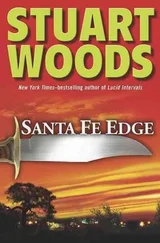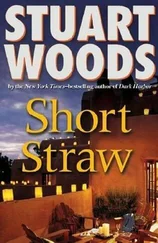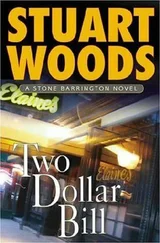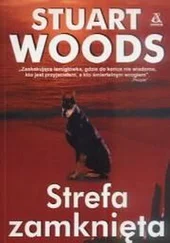“How soon do you need this?”
“How fast can you get it done?”
“The East Hampton house, a week. The Palm Beach and New York places, two weeks, if I use a separate team for each place.”
“And that would cost the same as if one team took five weeks?”
“Yes, except for any travel expenses. I’ll consult with real estate agencies on property values, but I’ll want my own people to do the interiors, and I’ll want museum and auction house people for the art.”
“I’ll have keys to all three properties sent to you within twenty-four hours.” Joan came in with the authorization letter, and Stone signed it and gave it to Eckstein, who read it.
“This will do nicely.”
“Something else.” He took the velvet bag from his pocket and placed it in Paul’s hand.
Paul weighed it. “Heavy. What is it?”
“That’s what I want you to tell me.”
Paul Eckstein shook the bag, and the contents fell into his hand. He stared at it for a moment, then reached over and pointed Stone’s desk lamp at the necklace. He retrieved a loupe from his pocket and examined, randomly, a number of the stones. “These are very good,” he said.
Stone took the Blume receipt from his pocket and handed it to Paul. “This says they’re all flawless.”
Paul read the letter. “Oh, the necklace is a copy — for a minute there, my heart was in my mouth.” He looked at some of the rubies. “Mind you, it’s an excellent copy, by the original maker.”
“What’s it worth?”
“At auction, a couple of million dollars, maybe more, if you get a couple of enthusiasts bidding.”
“There’s a tiny stamp inside the choker,” Stone said. “I couldn’t make it out.”
Paul held the piece close to the lamp, located it, and looked at it through his loupe. “Jesus Christ,” he said, and there was wonder in his voice.
“What does it say?”
“It says, ‘Bijoux Blume, Paris 1899.’”
“The receipt says 1946.”
“Then either the receipt or the necklace is lying.”
“Which one?”
“Stone, do you know what this is, or what it’s a copy of?”
“Sort of. It’s very like the choker in Gustav Klimt’s Woman in Gold .”
“Its proper title is Portrait of Adele Bloch-Bauer , painted in 1907 — or rather, finished in that year. Klimt worked on it for three years before that.”
“Yes, I saw it at the Neue Galerie a while back.”
“The painting, along with several others, and the choker, were confiscated by the Gestapo shortly after the Anschluss, the Nazi takeover of Austria.”
“I know.”
“The paintings ended up in the Belvedere Museum, in Vienna. Frau Bloch-Bauer’s niece sued the Austrian government, took them all the way to the Supreme Court, then went to arbitration to get them back.”
“I know. What happened to the necklace?”
“It ended up in the possession of Hermann Goering. His wife wore it.”
“What happened to it at the end of the war?”
“Goering took his possessions out of his hunting lodge, called Carinhall, after his late first wife. As the Russian Army approached, he set fire to the house, and it burned to the ground, then he escaped to his house on the Obersalzberg, the Bavarian Alps. From there he made his way to Radstadt, near Salzburg, where he planned to surrender to the Americans in order to stay out of the Russians’ hands, but he was captured by the American Army before he could surrender.”
“And what happened to the necklace?”
“I think it’s very likely that it is resting in my hand,” Paul said, holding up the choker.
“And how did it come to be here?”
“Goering’s house on the Obersalzberg was overrun by American troops, who sacked the place very thoroughly, drinking Goering’s wines and grabbing souvenirs. I think it’s likely that one of the soldiers came across the necklace and put it in his pocket. Certainly, it was never cataloged by the army. After I saw the movie The Woman in Gold , I did some research, and I could find no report anywhere that it ever surfaced. Spoils of war, I guess you’d say.”
“Then who legally owns it?”
“Adele Bloch-Bauer died of natural causes in 1925. Her husband, Ferdinand, was her only heir. He’s dead, and they had no children, and it passed to his brother-in-law, Adler. The last legal transaction regarding the necklace occurred when Adler gave it to his daughter as a wedding gift. It was taken from her by the Gestapo. She died a few years ago, in her nineties, without issue, I believe. Perhaps, in the normal course of events, it would have passed to a descendant of some distant relative. Some of her family were lost in the Holocaust, I believe, so it could be very complicated.”
“What is the significance of the date, 1899, engraved in the necklace?”
“Ferdinand had the necklace made as a wedding gift for his wife, Adele. They were married in 1899.”
The two men sat quietly for a long moment.
“This Fiske, mentioned in the receipt from Blume, is he Carrie Fiske’s father?” Paul asked.
“Grandfather.”
“Bijoux Blume was still operating in Paris in 1946. I think the last member of the family died in the late fifties or early sixties, and the business closed or was sold, perhaps to a competitor.”
“Would, perhaps, whoever bought Blume still have the business records?”
“Certainly records of the Blume designs might exist. A competitor buying the business would recognize the value of keeping the drawings and records of their sales. It’s all provenance, which can be key to establishing value.”
“Would their designs have been photographed, as a matter of course?”
“Perhaps, particularly if the Blumes were very proud of a piece and wanted to be able to establish their connection with it. It seems likely that they would feel that way. It is — no matter who wore it or painted it or stole it — a remarkable piece of work, probably unique.”
“Suppose this proved to be the original. What value would you place on it?”
“Priceless,” Paul replied. “When Mrs. Adler sold The Woman in Gold and the other paintings, Ronald Lauder paid her a hundred and thirty-five million for them, and that was years ago. The necklace might not bring that kind of money, but in some ways, for some people, it might be an even bigger trophy, especially after the movie. There are a lot of billionaires in the world.”
“Paul,” Stone said, “how would you like to spend a few days in Paris, on me?”
Paul smiled. “I think I could stand that, if I can take my wife.”
“You buy her ticket. I’ll put you up in a suite in the Paris Arrington,” Stone said. “Get your people organized for the work in the three houses, then go to Paris as soon as you’re ready. Joan will arrange the hotel and your transportation.”
Paul put the necklace back into its velvet pouch and dropped it into Stone’s hand. “Take good care of it,” he said.
“Oh, I will. And Paul, not a word of this to anyone, not even your wife.”
Paul held a finger to his lips, then left.
Paul Eckstein went straight home and found his wife getting out of the shower. He embraced and kissed her, unmindful of her wetness.
“What was that all about?” she asked when she could take a breath. “It’s been a long time since you came home at noon for a quickie.”
“This isn’t about a quickie,” Paul replied, kissing her again. “How would you feel about a week in the best hotel in Paris?”
“Can we afford it?”
“We can, for two reasons. One, I have just been handed the biggest, most lucrative estate job of my life, and two, the job includes investigating a piece of jewelry in Paris.”
Читать дальше


